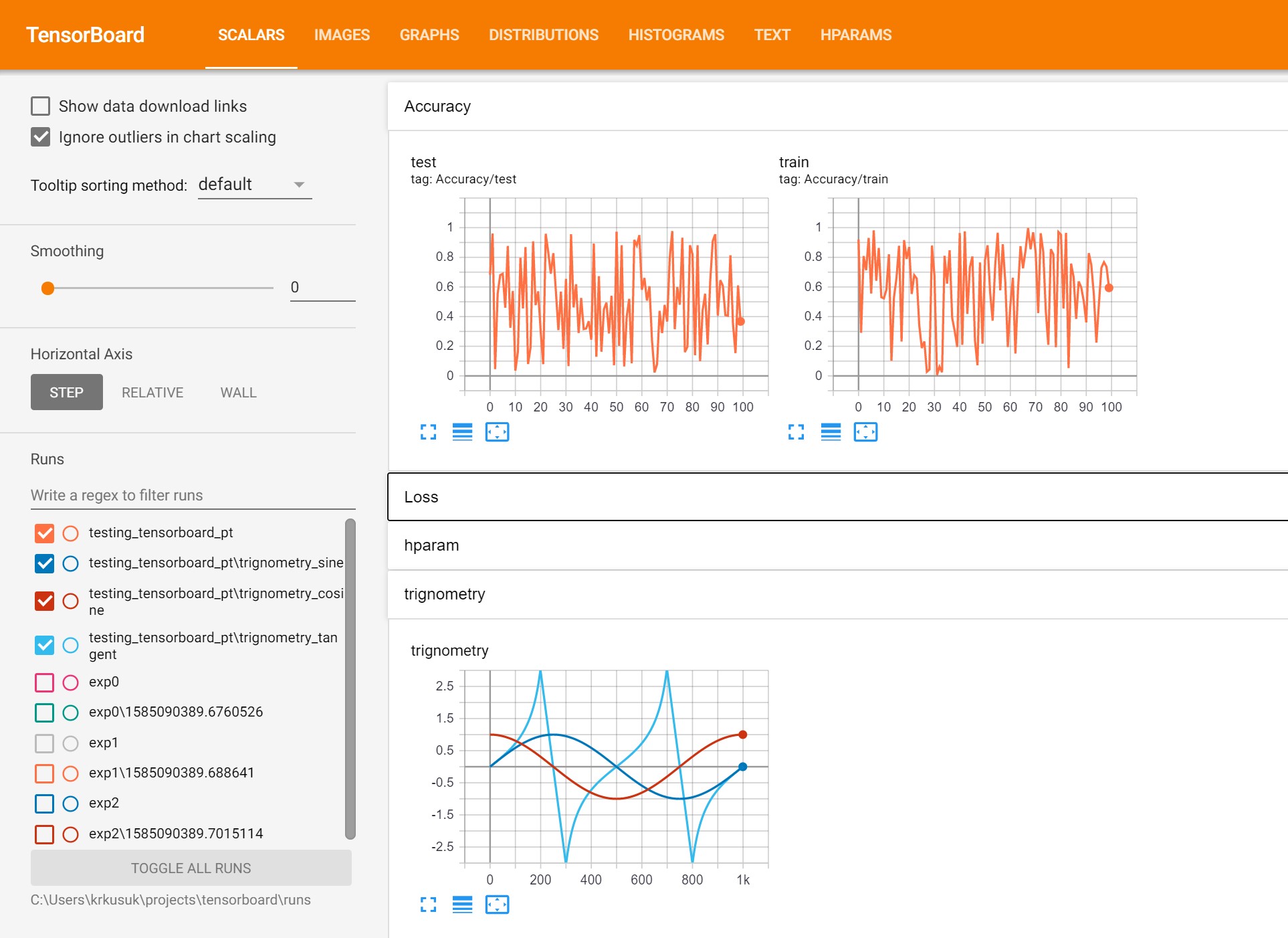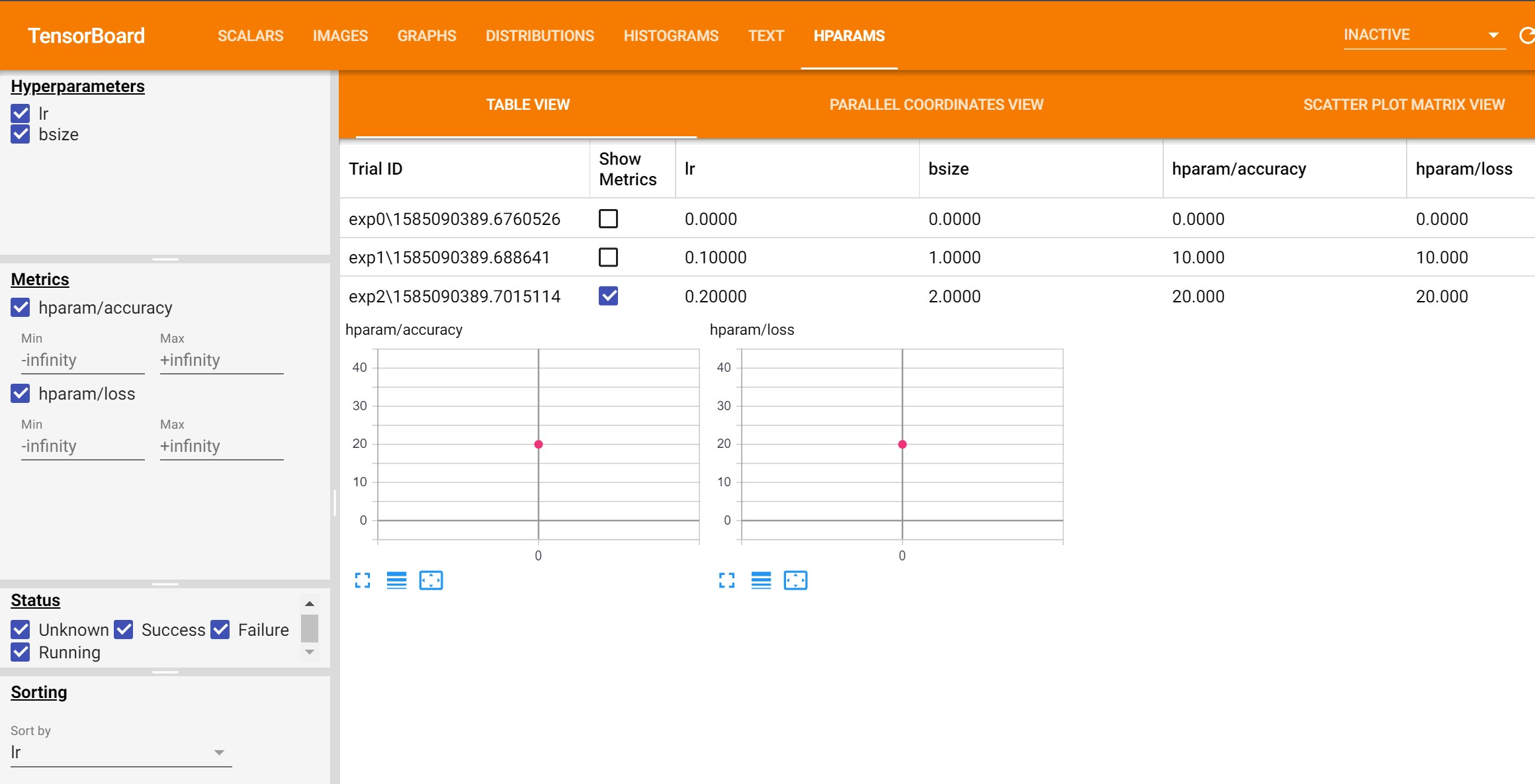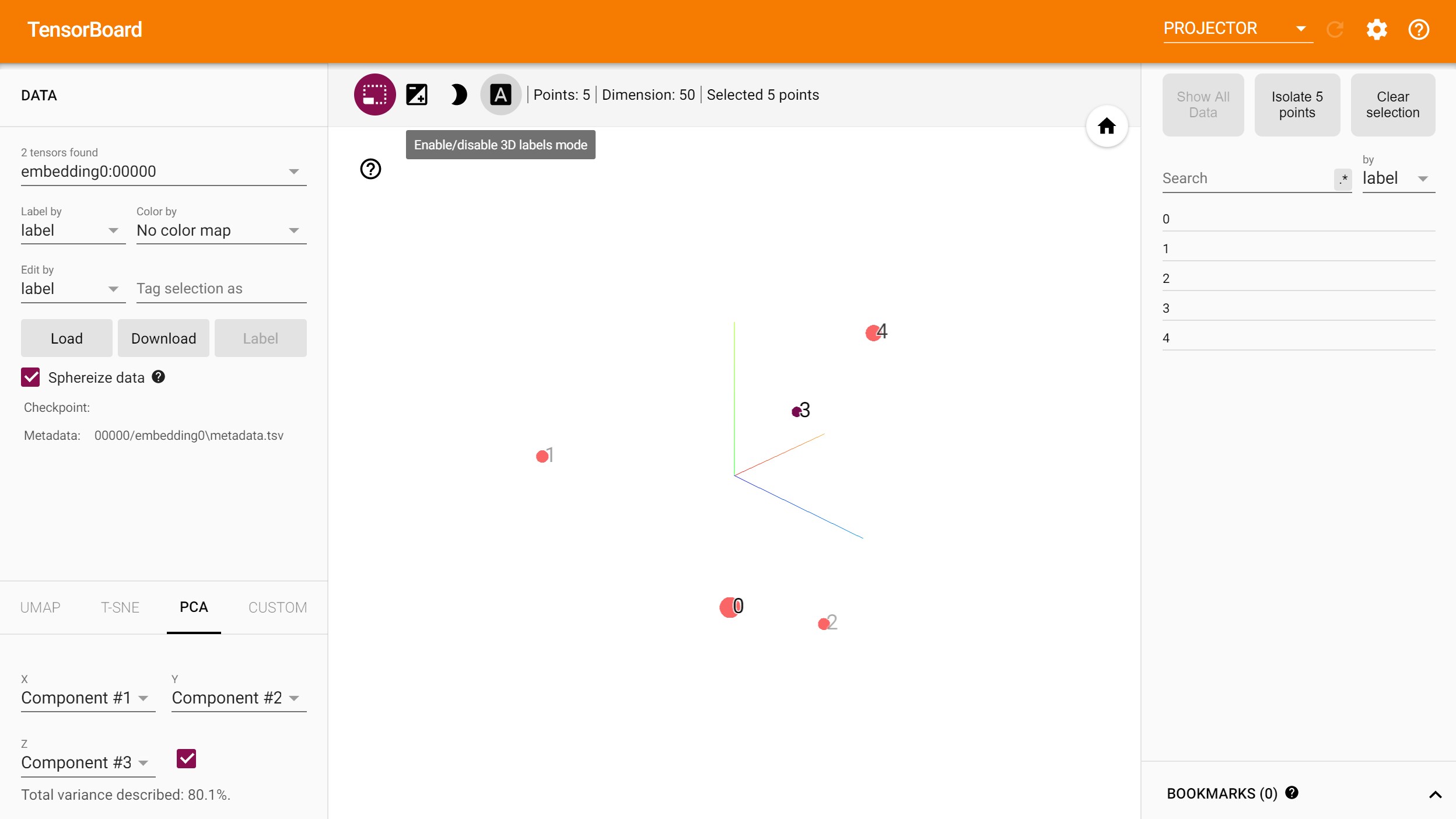Using Tensorboard in Pytorch
Clear everything first
! powershell "echo 'checking for existing tensorboard processes'"
! powershell "ps | Where-Object {$_.ProcessName -eq 'tensorboard'}"
! powershell "ps | Where-Object {$_.ProcessName -eq 'tensorboard'}| %{kill $_}"
! powershell "echo 'cleaning tensorboard temp dir'"
! powershell "rm -Force -Recurse $env:TEMP\.tensorboard-info\*"
! powershell "ps | Where-Object {$_.ProcessName -eq 'tensorboard'}"
! powershell "rm -Force -Recurse runs\*"
checking for existing tensorboard processes
cleaning tensorboard temp dir
Create Summary writer
from torch.utils.tensorboard import SummaryWriter
# Writer will output to ./runs/ directory by default
writer = SummaryWriter('runs/testing_tensorboard_pt')
Logging model graph and images
import torch
import torchvision
from torchvision import datasets, transforms
# Writer will output to ./runs/ directory by default
transform = transforms.Compose([transforms.ToTensor(), transforms.Normalize((0.5,), (0.5,))])
trainset = datasets.MNIST('mnist_train', train=True, download=True, transform=transform)
trainloader = torch.utils.data.DataLoader(trainset, batch_size=64, shuffle=True)
model = torchvision.models.resnet50(False)
# Have ResNet model take in grayscale rather than RGB
model.conv1 = torch.nn.Conv2d(1, 64, kernel_size=7, stride=2, padding=3, bias=False)
images, labels = next(iter(trainloader))
grid = torchvision.utils.make_grid(images)
writer.add_image('images', grid, 0)
writer.add_graph(model, images)
writer.close()

Logging scalars ang grouping them
from torch.utils.tensorboard import SummaryWriter
import numpy as np
#writer = SummaryWriter()
for n_iter in range(100):
writer.add_scalar('Loss/train', np.random.random(),n_iter)
writer.add_scalar('Loss/test', np.random.random(),n_iter)
writer.add_scalar('Accuracy/train', np.random.random(),n_iter)
writer.add_scalar('Accuracy/test', np.random.random(),n_iter)
Run multiple scalars at once
import math
#writer = SummaryWriter(log_dir = 'runs/multi_scalar')
for i,theta in enumerate(np.linspace(0, math.pi *2, 1000)):
stats = {'sine': math.sin(theta),
'cosine':math.cos(theta),
'tangent':math.tan(theta)}
writer.add_scalars('trignometry', stats, i )
writer.close()

Add histogram
#writer = SummaryWriter(log_dir = 'runs/histogram')
for epoch in range(1,5):
for i in range(10):
writer.add_histogram('random_normal/epoch_'+str(epoch), torch.randn(1,1000)+i, i)
writer.add_histogram('random_uniform/epoch_'+str(epoch), torch.rand(1,1000)+i, i)
writer.close()

Add image
#writer = SummaryWriter(log_dir = 'runs/images')
for step in range (3):
# create a 100x100 random image and normalize
random_image = np.random.randint(10000,size = (1,10000)).reshape(100,100)
random_image = random_image/ 10000
writer.add_image('random_image',
random_image,
step,
dataformats = 'HW')
writer.close()

Add Text
#writer = SummaryWriter(log_dir = 'runs/text')
writer.add_text('lstm', 'This is an lstm step 0', 0)
writer.add_text('lstm', 'This is an rnn step 10', 10)
writer.close()

Add hyper parameter
for i in range(3):
exp = f'exp{i}'
with SummaryWriter('runs/'+exp) as w:
w.add_hparams({'lr': 0.1*i, 'bsize': i},
{'hparam/accuracy': 10*i, 'hparam/loss': 10*i})

Add embeddings
embedding1 = torch.nn.Embedding(5, 50)
embedding2 = torch.nn.Embedding(5, 50)
embedding1
Embedding(5, 50)
- This is needed if tensorflow is installed along with tensorboard
- Error without this code : module ‘tensorflow_core._api.v2.io.gfile’ has no attribute ‘get_filesystem’
-
Another solution : uninstall tensorflow, keep only tensorboard
import tensorflow as tf
import tensorboard as tb
tf.io.gfile = tb.compat.tensorflow_stub.io.gfile
Log embeddings to tensorboard
for i, emb in enumerate([embedding1, embedding2]):
writer.add_embedding(emb.weight,
metadata = np.arange(emb.weight.shape[0]),
tag = f'embedding{i}')
writer.close()

writer.flush()
Run Tensorboard
In a new anaconda powershell
pwd
dir runs
tensorboard --logdir="C:\Users\..<current_folder_path>\runs"